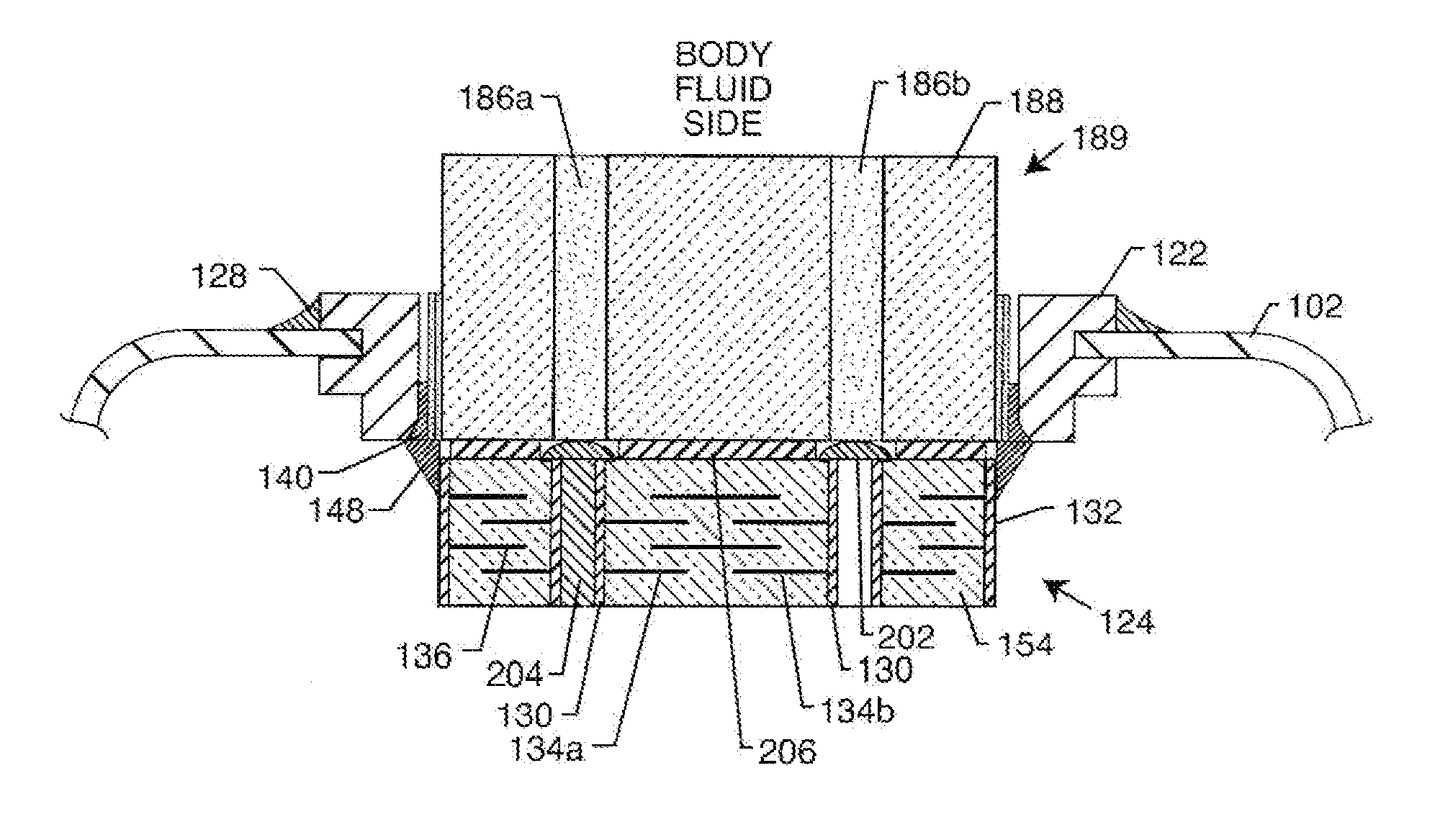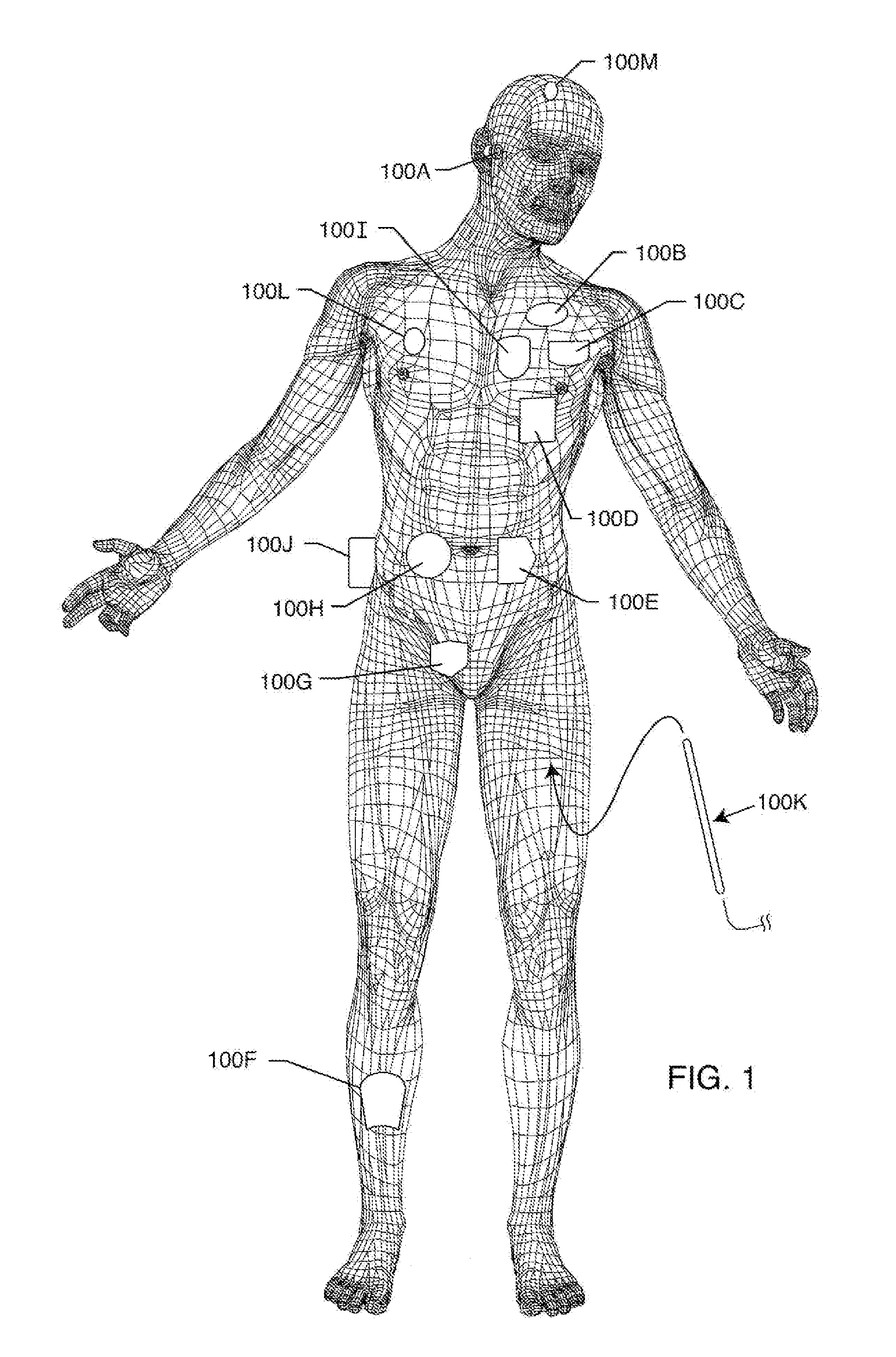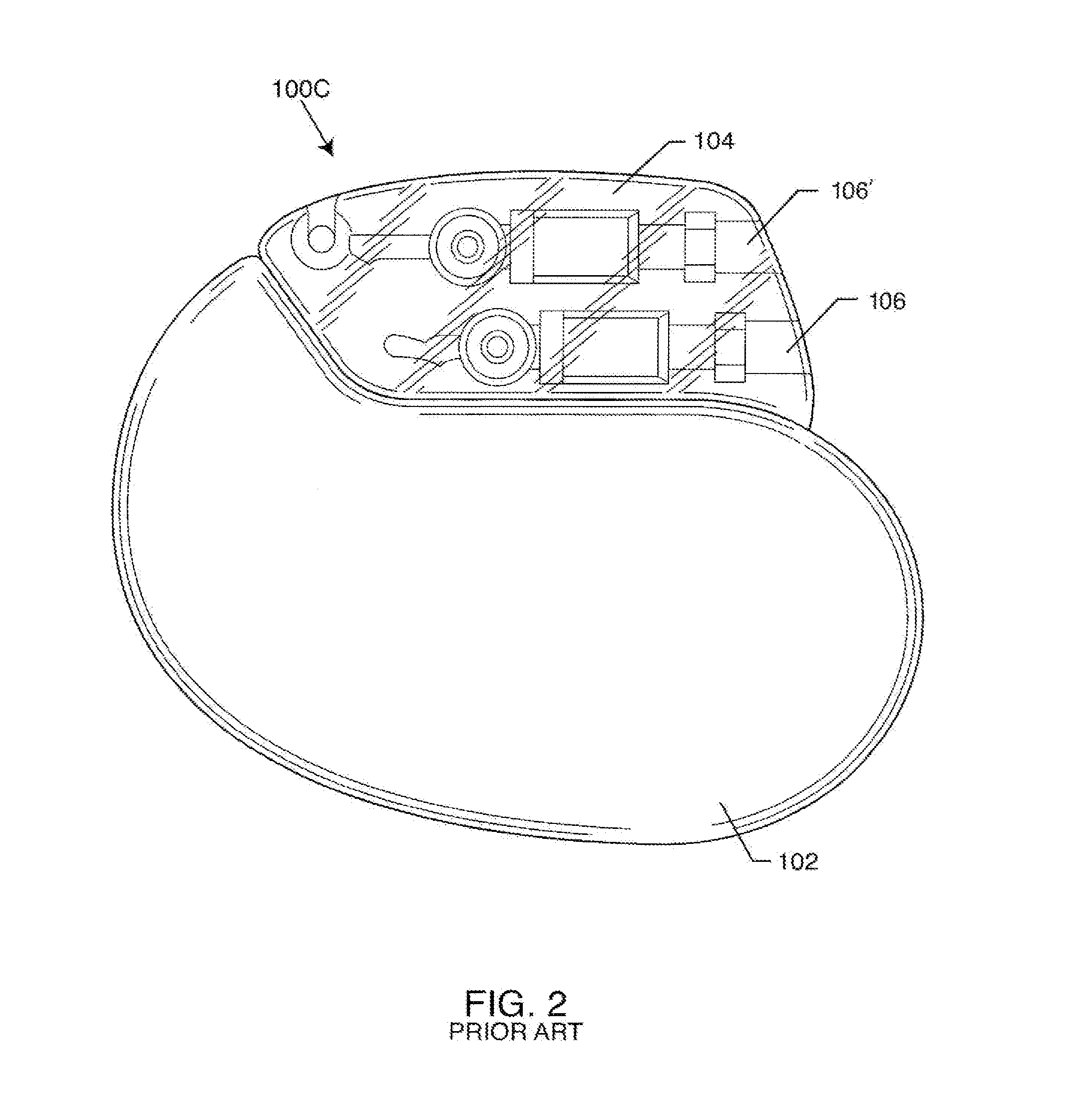Co-fired hermetically sealed feedthrough with alumina substrate and platinum filled via for an active implantable medical device
a technology of alumina substrate and a feedthrough, which is applied in the direction of fixed capacitor electrodes, pharmaceutical packaging, packaging, etc., can solve the problems of affecting the intended function of the medical device, affecting the therapy delivery intended for a patient by the medical device, and compromising the functionality of the implantable medical device, so as to achieve the effect of minimizing the damage of tensile stress
- Summary
- Abstract
- Description
- Claims
- Application Information
AI Technical Summary
Benefits of technology
Problems solved by technology
Method used
Image
Examples
Embodiment Construction
[0159]FIG. 1 illustrates various types of active implantable and external medical devices 100 that are currently in use. FIG. 1 is a wire formed diagram of a generic human body showing a number of implanted medical devices. 100A is a family of external and implantable hearing devices which can include the group of hearing aids, cochlear implants, piezoelectric sound bridge transducers and the like. 100B includes an entire variety of neurostimulators and brain stimulators. Neurostimulators are used to stimulate the Vagus nerve, for example, to treat epilepsy, obesity and depression. Brain stimulators are similar to a pacemaker-like device and include electrodes implanted deep into the brain for sensing the onset of a seizure and also providing electrical stimulation to brain tissue to prevent the seizure from actually happening. The lead wires that come from a deep brain stimulator are often placed using real time imaging. Most commonly such lead wires are placed during real time MRI...
PUM
| Property | Measurement | Unit |
|---|---|---|
| shrink rate | aaaaa | aaaaa |
| temperature | aaaaa | aaaaa |
| temperature | aaaaa | aaaaa |
Abstract
Description
Claims
Application Information
 Login to View More
Login to View More - R&D
- Intellectual Property
- Life Sciences
- Materials
- Tech Scout
- Unparalleled Data Quality
- Higher Quality Content
- 60% Fewer Hallucinations
Browse by: Latest US Patents, China's latest patents, Technical Efficacy Thesaurus, Application Domain, Technology Topic, Popular Technical Reports.
© 2025 PatSnap. All rights reserved.Legal|Privacy policy|Modern Slavery Act Transparency Statement|Sitemap|About US| Contact US: help@patsnap.com



